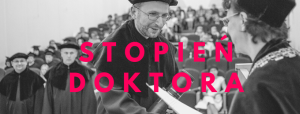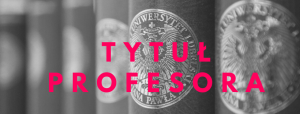- mgr Katarzyna Młynek - streszczenie
- prof. dr hab. Bolesław Andrzejewski – recenzja
- dr hab. Stanisław Kijaczko – recenzja
The problem of communication in John Dewey' philosophy
Summary of doctoral dissertation
The main aim of the dissertation is to analyse the Dewey's way of understanding the phenomenon of communication from the perspective of transmission and constitutive model of communication. According to transmission model communication process consists in conveying information (called sometimes a message or statement) from a sender to a receiver. When the receiver understands the statement directed to him/her, that is, what the sender wants to convey, we say about successful or effective communication. If he/she does not understand conveyed information or he/she understands it in a wrong way, we deal with unsuccessful communication or with misunderstanding. In turn, constitutive model of communication (called also ritual or orchestral models) emphasises taking part in the communication itself understood as a process performed in a given socio-cultural context. In these depictions it is stressed that a socio-cultural world which we are members of is constructed by communication. In the dissertation these two ways of understanding of the communication are treated as a tool to interpret the John Dewey's standpoint. The main problem of the dissertation is the question if and in what way a division for the transmission and constitutive model of communication can be useful in better understanding of Dewey's communication concept.
The dissertation is divided into three chapters. The first chapter is devoted to contemporary discussions over the issue of communication and shows in what way analysed issues can be problematized. Two research perspectives are presented there: psychological and antipsychological ones which influence the way of analysing communication issues and, crucial for this work, transmission and constitutive models of communication. In the second chapter philosophical bases of Dewey's approach to communication are presented from the perspective of conceptual tools worked out in the first chapter. The following issues are undertaken: is Dewey's attention directed more to communication understood as conveying possibly undisturbed information or rather to building a community; should Dewey's view of communication be associated with psychologism or rather with antipsychologism; what is the role of communication in Dewey's philosophy; what is his position in a debate between naturalism and antinaturalism in theory of communication. Also the role of context in Dewey's understanding of interpersonal communication and the way of depicting individuals taking part in it are analysed. The subject matter of the last chapter is Dewey's social philosophy, especially the concept of education, democracy and art seen from the perspective of his concept of communication.
Four elements are especially important in Dewey's model of human communication: (1) culture/situation is a matrix determining the spectrum of possible actions of subjects, (2) human communication takes place within this matrix, (3) it does not consist primarily in conveying information but in taking part in common meaning constructed within interactions which take place, (4) people are endowed with intentionality and awareness thanks to which they can participate in common experiencing. The analysis of Dewey's views allows to state that he tries, on one side, to emphasize the first-person point of view and an essential role of individual preferences and interests of human individuals and their creativity, on the other side, he wants to show that, above all, the situation/context determines the way of acting and the goal which should be pursued. The Dewey's definition of communication, by the fact that it takes into account cultural and situational determinants, approaches the way of understanding communication according to constitutive depictions, however, at the same time it does not resign from showing individual actions of subjects which is typical of transmission approaches of communication. Dewey considers communication components to be essential from both presented models. He significantly broadens the concept of communication (like the concept of experience) by including in it some interactions happening in nature. Although the Dewey's way of perceiving communication is very broad, he treats the human communication in a special way. The G. Bateson's statement that "one cannot not communicate" - meaning that a human way of existence consists in communicating - is in accordance with the Dewey's view that communication is a language and knowledge presupposition. His analyses of communication are not limited only to its verbal form. On the contrary - nonverbal communication plays an important part in the process of creating the community. Communication according to Dewey consists in taking part in collectively shared experience.
In Dewey's view, interpersonal communication consists, above all, in empathy and coexistence, and thereby, it is closer to dialogical relations or existential communication than semantic communication understood as a process of conveying information. According to Dewey, the sender cannot convey message to the receiver if they do not share common experience. Communication in proper sense of the term begins with emotional empathising in the interlocutor's situation, not with semantic conveying the message. Dewey's considerations related to conditions which should be met to recognise the fact that we deal with the communication process, situate his view next to these approaches in which it is emphasised that communication is an issue of primarily ethical rather than logical character.
According to Dewey, the most perfect form of communication is communicating by art. Participating in art, we cover the border between the subject - sender and receiver of art, and object - artistic product which means that thanks to art we both fuse with a piece of art as well as with its other receivers. In such a situation all communication disturbances typical of its traditional forms, e.g. for language communication, disappear, and participation in such perceived aesthetic experience becomes the most essential. In that case the main function of communication and its final aim is to create a community of free individuals. Such a communication remains only an ideal which we should strive for.
The Dewey's way of perceiving communication goes beyond its traditional understanding as a process of conveying information. His philosophy makes us aware that the concept of communication is entangled both in controversy of ontological and epistemological character, but most of all, that it is of a social character. Thereby, studying communication is essentially connected with the question how to understand the society and democracy, and what education and all products of human activity, e.g. art are.
Ostatnia aktualizacja: 17.11.2015, godz. 08:07 - Andrzej Zykubek






